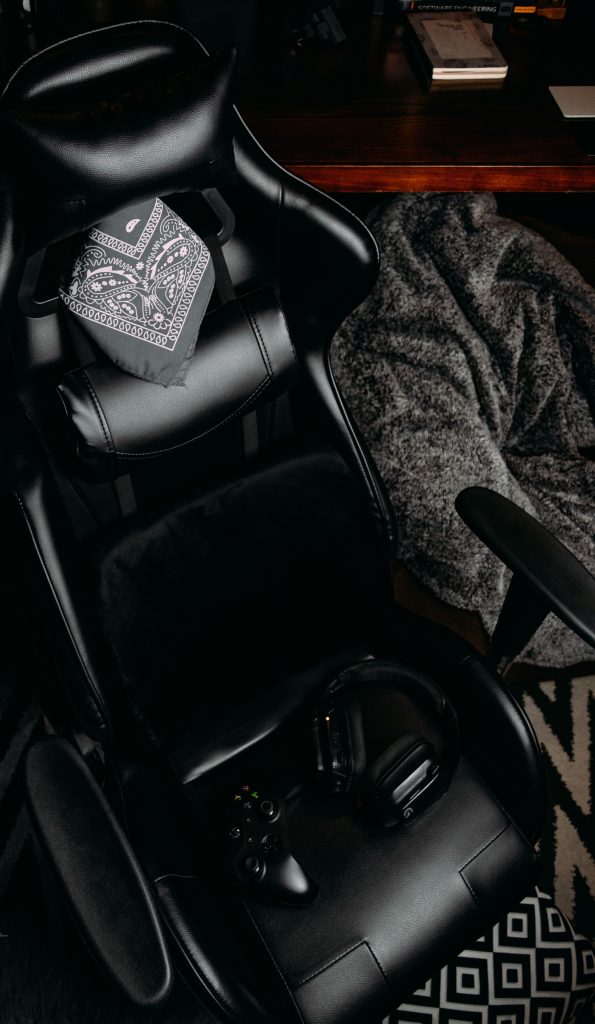With more people around the world finding themselves now permanently working from home, and COVID encouraging more at-home activities, like gaming, home office ergonomics has never become more important than ever.
Both working from home and PC gaming are similar in the ergonomic world – proper posture can mean the difference between a comfortable sitting experience or long-term health issues down the road. Whether you purchase equipment that is more focused for work or gaming, you’ll find both offer similar ergonomic features.
The focus of this article is on gaming equipment – as they can also double as equipment you can use for working at home, allowing you to save money and space as well.
What and How Do Certain Gaming Equipment Help You Ergonomically?
Chairs

If you have one piece of home office furniture to invest in, we highly recommend you consider purchasing the best gaming chair for the most optimal sitting experience. As we’re sitting longer hours than ever before, ensuring you are sitting ergonomically is key to preventing health issues.
Many gaming chairs come with typical features such as adjustable height, lumbar support pillows, and armrests. Learning about the different features of gaming chairs and which make the most sense for you is a key step in practicing proper ergonomics while sitting.
Adjustable height allows you to adjust your setup to suit your needs. If your table or monitor is too short/tall, then your chair can rectify those issues with a simple adjustment. Unlike adjustable tables which are prohibitively expensive, adjustable chairs are very common and often not that much more expensive.
To properly adjust your posture, ensure your feet are flat on the ground with your legs at a near 90-degree angle. If you are unable to do this, add in an extra stool or platform under your feet.
Lumbar support pillows are included in some gaming chairs and support your back and spin. The pillow helps your back maintain its natural curve that chairs themselves do not provide. While it may sound like a bonus to have one included with your chair, it is not entirely necessary. You can always purchase an external lumbar support pillow. In fact, many included pillows may be too thick for most people; purchasing one on your own that fits your particular back shape is recommended.
Armrests that are adjustable provide comfort for your arms and assist in achieving the 90-degree angle your arms should be while using your mouse and keyboard. Desks play a huge role, usually in tandem, with your armrests in providing this support. This will be discussed in the next section.
Desks
Your desks’ core focus is on providing proper arm posture as well as proper placement of your monitor. The key areas in terms of ergonomics include arm adjustment, monitor positioning, and wrist placement. Most gaming desks, regardless of shape, are built to provide ergonomic support in conjunction with your other gaming equipment.
Your arms should be at a 90-degree angle when using your keyboard and/or mouse. Alongside the armrests of your chair, both should be adjusted so your arms are as comfortable as possible. Elbows should be at the same height as your desk.
For monitor placement, it should be arms-length away from your eyes. Wider desks can help with this as opposed to smaller desks. Ensure you have a desk that provides enough space for your monitor, keyboard, and mouse so your arms and viewpoint are comfortable and natural.
Finally, wrist placement refers to the padding near your wrists. While not strictly necessary, wrist guards cushion the heel of your hands, and not your actual wrists. It provides less stress and strain on the muscles that are supporting your hands and arms on the table. Improper placement can result in a very common health condition: carpal tunnel.
Monitors

The features that monitor have that assist in ergonomics are eye positioning and overall eye strain from prolonged sessions.
In terms of positioning, your monitor should be arms-length away from your eyes but as well as your gaze should be neutral towards the monitor. If you are looking slightly down or up, you need to adjust your monitor. Luckily, most monitors are easily tilt-able to adjust for this.
Eyestrain is a common issue now that we are glued to our screens more than ever. Factors such as brightness settings, refresh rates, blue light filters and color fluidity all play a role in the overall strain and potential headaches you may experience.
Brightness settings and blue light filters are great when screens are too vibrant in your gaming environment. Refresh rates and color fluidity may improve the “smoothness” of the screen, causing less eye strain or headaches. This however is different for everyone. Trying out different refresh rates and experimenting on different settings is the best way to determine if the monitor is right for you.
Conclusion
Ergonomics is a difficult topic to discuss as everyone has their own opinions and ideas of proper posture. The key thing to remember is that everyone is different, and each working environment is also different. It is important to be knowledgeable of general best practices and tailor them to your own situation. Key ideas like proper wrist placement and leg placement are important for everybody to follow.
Every piece of gaming equipment has decades of ergonomic knowledge built into it; it is up to you to practice proper ergonomics! If there is one key takeaway, it is always mindful of how you are sitting and do not be afraid to get up every 15 minutes to stretch and move your muscles.

